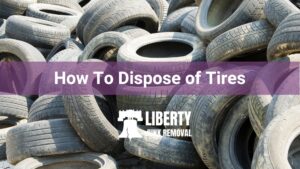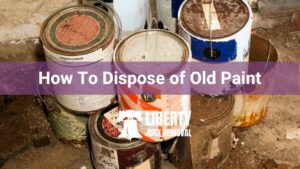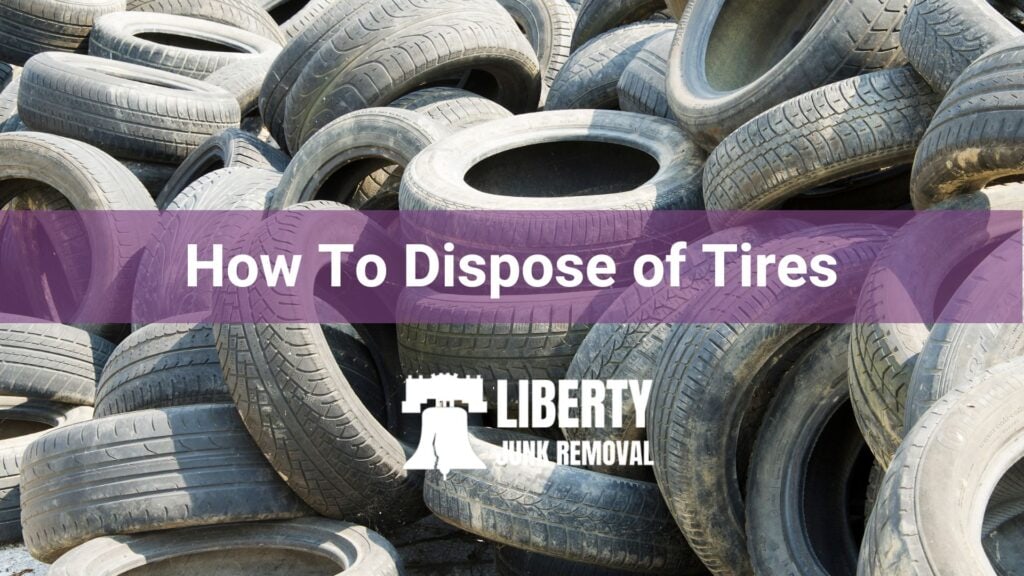Got old tires? Disposing of tires is not just about getting rid of them. It’s about doing it right and being eco-friendly. Improper disposal can harm the environment. However, solutions exist—recycling, innovative technologies, and responsible disposal methods. It’s about turning a problem into an opportunity for sustainability.
Keep reading to discover how you can be part of the solution as we tackle in-depth answers to “How to dispose of tires?”
Professional Tire Disposal Services
While there are several professional options available for tire disposal, choosing the right option depends on your specific needs and the availability of these services in your area:
Local Waste Management Facilities
They often have specific protocols for handling and recycling tires. However, it’s important to note that not all facilities accept tires, so it’s recommended to check with your local facility first.
Specialized Tire Recycling Centers
Specialized tire recycling centers are dedicated to transforming old tires into new, useful products. These centers employ various recycling methods, turning tires into ground rubber, fuel, asphalt additives, and more. Tires are a frequently recycled material in the US, with recycling centers able to handle all parts of the tire, including fiber and steel wire.
Junk Removal Services
Junk removal services, like us at Liberty Junk Removal, offer a convenient way to dispose of tires. We will come to your location, haul away old tires, and ensure that they are recycled or disposed of responsibly.
This is particularly useful for individuals who lack the means to transport tires themselves. Services like these usually have the capability to handle various types of tires, from bicycles to automobiles, which makes them a versatile option for tire disposal.
DIY Methods for Tire Disposal
Here are your options if you want to handle the disposal of your tires by yourself:
Municipal Tire Collection Events
Many local governments organize these events, which provide residents with the opportunity to drop off their old tires for proper disposal or recycling, often at no cost. These events are not only convenient but also ensure that tires are processed in an eco-friendly way. It’s advisable to check with your local waste management service to see if they offer such programs.
Delivering Tires to Recycling Facilities
Recycling facilities accept old tires and transform them into valuable resources. The recycling process usually involves shredding the tires into smaller pieces and then repurposing them for various uses like rubber mulch, fuel, asphalt additives, and more. Before visiting a recycling center, it’s wise to call ahead to confirm their acceptance policies and whether there might be a fee involved.
Utilizing Retailer Take-Back Programs
Many tire retailers and manufacturers offer take-back programs, where they accept old tires when you purchase new ones. Some retailers may even offer incentives or discounts for bringing in your old tires.
Eco-Friendly Tire Recycling Options
Here’s a look at how used tires are recycled:
Rubber Mulch Production
Rubber mulch production involves several stages, each contributing to the creation of a versatile and environmentally beneficial product:
- Tire Shredding and Steel Removal: The process begins with shredding used tires into smaller pieces. Steel bands, which are part of the tire’s structure, are removed using magnets to ensure the rubber mulch is nearly steel-free, around 99.9%.
- Grinding: After steel removal, the rubber is further ground into small nuggets suitable for use in landscaping, playgrounds, and other applications. This size reduction is crucial, as it determines the effectiveness and safety of the rubber mulch.
- Coloring: Although not a necessary step, many manufacturers add color to rubber mulch to enhance its aesthetic appeal. Non-toxic paints are used, and a color-lock system ensures that the mulch retains its color for an extended period.
- Packaging: Finally, the rubber mulch is weighed, packaged, and prepared for distribution, depending on its intended use.
Applications of Rubber Mulch
Rubber mulch finds extensive use in various sectors:
- Landscaping: It’s an alternative to traditional wood mulch. It offers benefits like weed control, no requirement for displacement due to weather, and resistance to insect dissemination.
- Sports Fields: Its use in sports fields, like golf courses and running tracks, helps create safer athletic environments.
- Playgrounds: Rubber mulch is often preferred in playgrounds for its safety features. It reduces the likelihood and severity of injuries compared to other materials.
Environmental Impact and Concerns
While rubber mulch is eco-friendly in terms of recycling tires and reducing landfill waste, there are some concerns:
- Fire Hazard: Rubber mulch can be a fire hazard, as it has been found to have high combustion characteristics compared to other mulches.
- Potential Toxicity: There are concerns about the toxicity of rubber mulch, as it may leach harmful chemicals into the soil and adversely affect small organisms in water habitats.
- Debated Safety for Children: Although rubber mulch is often used in children’s play areas for its cushioning effect, there are debates about its safety due to potential exposure to toxic chemicals.
Tire-Derived Fuel
Tire-Derived Fuel (TDF) is an innovative and eco-friendly solution for repurposing discarded tires. It involves converting waste tires into a fuel source, used as an alternative to traditional fossil fuels like coal or oil in various industrial settings.
The process of making TDF begins with gathering and sorting used tires, then shredding and grinding them into tiny chips or rubber granules. This material is then classified by size to meet specific requirements for different applications.
Key Applications
TDF has several key applications in industrial processes. It serves as a valuable fuel source in settings such as cement kilns, pulp and paper mills, power plants, and electric utilities.
In cement kilns, for example, TDF replaces traditional fossil fuels, which contribute to reduced carbon emissions in cement production. The high heat value and combustion characteristics of TDF make it well-suited for these applications.
Environmental Benefits
One of the significant environmental benefits of TDF is its role in waste tire management. By diverting tires from landfills, TDF helps alleviate environmental burdens and reduces the risk of tire fires, which release toxic chemicals into the atmosphere. The energy recovery from TDF reduces reliance on fossil fuels, conserves natural resources, and contributes to a more sustainable energy mix.
TDF is recognized for its lower greenhouse gas emissions compared to traditional fossil fuels, thus helping to mitigate climate change impacts and improve air quality. Furthermore, it offers an economically viable alternative to traditional fuels, often at a lower cost. Industries adopting TDF as a fuel source benefit from reduced energy costs while promoting environmental sustainability.
Safety Concerns
Despite these benefits, there are concerns about the potential health and environmental impacts of TDF. The U.S. Environmental Protection Agency (EPA) supports the use of TDF as a viable alternative to fossil fuels, recognizing its higher BTU value than coal and lower emissions. The EPA also emphasizes the responsible use of TDF in facilities with appropriate environmental permits and compliance requirements.
Crumb Rubber Applications
Crumb rubber, derived from recycled tires, is used in a variety of applications due to its versatility and sustainability. It is created by grinding used or scrap tires into small, granulated particles, which can range from almost dust-like size to about 0.5 inches in size.
How It’s Done
The production process involves removing non-rubber materials such as steel and fiber, which can be recycled into other products. There are two primary methods for creating crumb rubber: ambient grinding and cryogenic processing.
Ambient grinding breaks down the tire at or above normal room temperature, while cryogenic processing involves freezing the rubber with liquid nitrogen before shattering it into small pieces.
Common Uses
One of the most common uses of crumb rubber is as an infill in artificial turf systems, providing a safe surface for sports fields. It’s estimated that around 13,000 fields in the United States use crumb rubber, with about 1,500 new installations annually.
Safety Concerns
However, there have been concerns about the health effects of exposure to crumb rubber in these applications, particularly regarding its content of polycyclic aromatic hydrocarbons and metals like zinc. Studies have shown mixed results regarding these health risks, with some indicating no significant health risks and others highlighting potential concerns.
Key Uses
Crumb rubber finds extensive use in road construction, particularly in asphalt, where it contributes to longer-lasting roads without potholes, cracks, or deformations. Additionally, it’s used in vibration absorption systems for railway structures, modifying the properties of concrete, and as speed reducers in urban areas. The material has also been beneficial to animal welfare, particularly in stables, as it provides a cushioning surface that is durable and easy to clean.
Furthermore, crumb rubber has applications in landscaping and playgrounds. For instance, it’s used as decorative mulch in gardens and open spaces, offering advantages like preventing the growth of fungi and unwanted weeds. In playgrounds, it’s used to pave surfaces with designs and figures, providing a child-friendly, anti-slip, and cushioning surface.
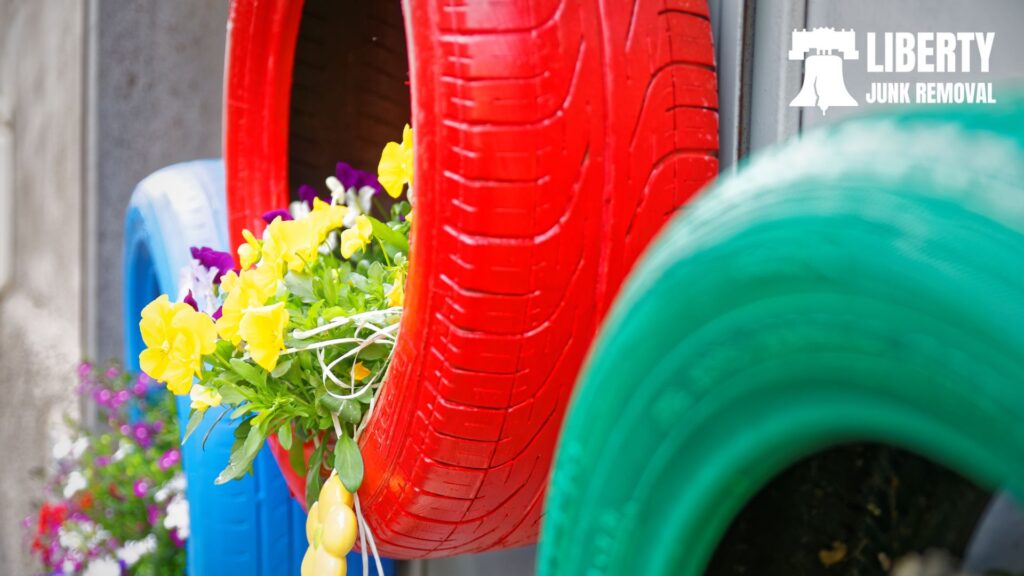
Repurposing Tires for Home and Garden
Here are some ideas for upcycling or repurposing old tires:
Creating Outdoor Planters
Creating outdoor planters from old tires is a creative and eco-friendly way to repurpose used tires while adding a unique touch to your home and garden. The process is relatively straightforward and offers a lot of room for personalization.
Here’s how you can create your own tire planters:
- Cleaning the Tire
Before transforming the tire into a planter, it needs to be thoroughly cleaned to remove any dirt and debris. Use a heavy-duty washcloth or rag along with soapy water for this purpose. A degreaser can be used to remove oily spots.
- Drilling Drainage Holes
Drill 6–8 holes at the bottom of the tire for drainage. This step is crucial to ensure that water does not accumulate inside the planter, which could lead to root rot.
- Painting the Tire
Spray paint the exterior of the tire to give it a colorful look. Choose a paint suitable for both indoor and outdoor use for durability. You can select any color that matches your garden or home decor style.
- Adding Soil and Plants
Fill the bottom half of the tire with potting soil. The soil should come up to the rim of the tire but not spill over. Once the soil is added, you can plant a variety of flowers or plants. It’s recommended to use a combination of thriller (tall, focal point plants), filler (mid-sized plants to add volume), and spiller (plants that cascade over the edge) for a balanced and aesthetically pleasing look.
- Displaying the Planter
You have the option to hang the tire planter or lay it flat on the ground. If hanging, use a heavy-duty rope and ensure it’s securely fastened. Alternatively, the tire can be used as a raised garden bed on the ground, or you can stack multiple tires for deeper-rooted plants.
When it comes to safety, while tires do contain some chemicals, most experts agree that these are only released upon incineration and are not water-soluble, making tires a safe choice for planters. However, if you have concerns, especially about growing edibles, it might be better to use tire planters for decorative plants only.
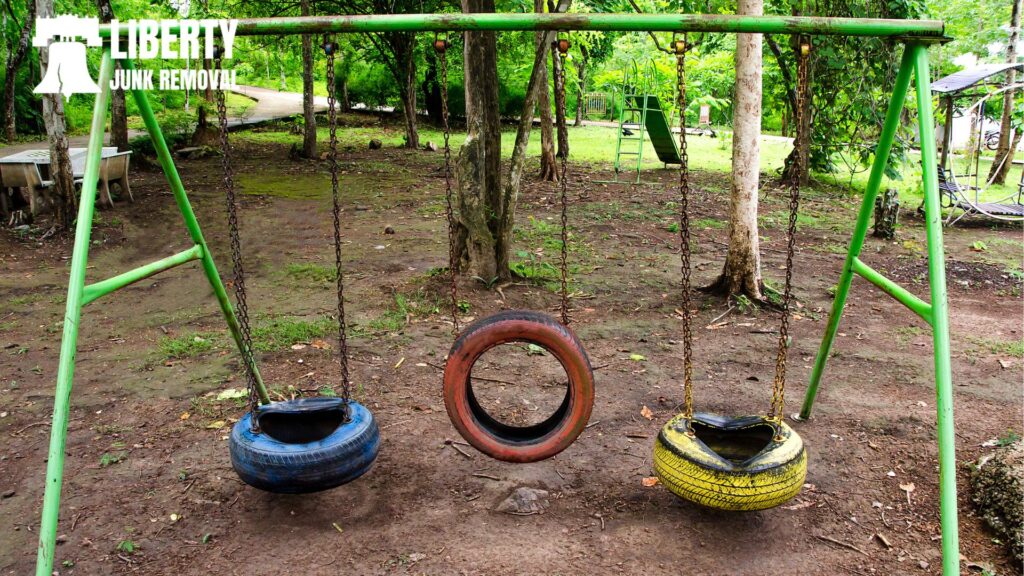
Constructing Playground Equipment
Constructing playground equipment from old tires is a creative and eco-friendly way to create fun and safe play areas for children.
Here are some ideas and tips on how to use old tires for playground equipment:
- Tire Swings: It’s classic and relatively simple to make; just cut a tire in half and suspend it from a sturdy tree branch using rope. Make sure the rope is securely tied to avoid any safety hazards.
- Tire See-Saw: A see-saw can be easily constructed using two large tires and a sturdy board or pipe. Place the board or pipe across the center of the two tires to create a fun and bouncy see-saw.
- Tire Tunnel: Join several tires together using rope or wire and cover them with fabric or tarp to create a tunnel effect.
- Rubber Alligators: For a whimsical touch, create a rubber alligator from an old tractor tire. You can paint it and add features like eyes, teeth, and a tongue for added realism. These alligators can be a fun and harmless ‘obstacle’ for kids to play with.
- Tire Climbing Wall: Use tires as steps for a climbing wall by suspending them from a frame. This can be a great way for kids to exercise and develop their climbing skills.
- Tire Sandbox: A sandbox can be created by placing two large tires side by side and filling them with sand. This can be a great sensory play area for younger children.
- Tire Pyramid: Challenge children with a tire pyramid made by stacking tires in a pyramid shape. This is a great way to incorporate climbing and balancing elements into play.
- Tire Slide: Create a slide by placing tires side by side and covering them with fabric or tarp. Ensure the covering is securely attached for safety.
- Tire Bridge: For larger playgrounds, a tire bridge can be a fun addition. Suspend tires between two trees using rope or wire to create a bridge that kids can cross.
- Tire House: For a more elaborate project, stack tires to create walls and cover them with a fabric or tarp roof to make a tire house. This can be a great playhouse or secret hideout for kids.
Upcycling Tires into Furniture
There are several innovative ideas to transform old tires into practical and decorative furniture items.
- Tire Coffee Table: You can accomplish this by using two tires and topping them with wood or glass. The resulting coffee table can vary in aesthetics from rustic to retro, depending on the design and finish you choose.
- Tire Sofa: If you have access to a number of recycled tires, you can construct sofas for your living room. This involves using a round board and an upholstered cushion to provide comfortable seating. The upholstery can be chosen to match or contrast with your existing decor, allowing for a unique and artistic touch.
- Tire Seats: For outdoor furniture, old tires can be effectively used to make rugged and durable seating. While the principle is similar to indoor furniture, for an outdoor vibe, you might want to retain some of the tire’s original design, enhancing it with spray paint to fit your outdoor space.
- Tire Ottoman: Another option is to create an ottoman from a tire, using materials like sisal or yarn for wrapping and a cushion for the top. This can be a fun project with an interesting and whimsical outcome, and it’s less time-consuming than some other tire furniture projects.
- Tire Valance: An unusual yet striking use of a tire is creating a valance for window treatments. This adds a unique and eco-friendly element to your home’s interior, especially if you’re aiming for a rustic or automotive theme.
- Tire Mirror Frame: You can also use a tire as a frame for mirrors, adding a unique twist to conventional mirror designs. This idea can bring an industrial or rustic vibe to your space.
Innovative Tire Recycling Technologies
Pyrolysis and Gasification Processes
Pyrolysis and gasification are advanced technologies for tire recycling, offering eco-friendly methods to break down waste tires into useful materials. Pyrolysis involves heating tires in the absence of oxygen, converting them into gas, oil, and carbon black.
Gasification is similar but includes a controlled amount of oxygen, transforming tires into synthetic gas and other byproducts. Both processes are energy-efficient and produce materials that can be used in various industries.
Devulcanization Techniques
Devulcanization is a process that reverses vulcanization, breaking down the cross-links in rubber to reclaim its original form. It’s essential for recycling tire-derived rubber. Techniques like microwave and thermomechanical devulcanization are explored for this purpose.
Microwave devulcanization involves using microwave energy to break sulfur bonds in the rubber, while thermomechanical devulcanization uses heat and mechanical forces. These techniques transform waste tire rubber into a more versatile form for reuse in new rubber products.
New Trends in Tire Recycling Research
Recent research in tire recycling focuses on enhancing the efficiency and sustainability of recycling processes. Innovations include improving the effectiveness of devulcanization methods and finding new applications for recycled tire materials.
The aim is to increase the recyclability of tires and reduce the environmental impact of tire waste. Advances in technology and methods are continually emerging, showcasing a commitment to more sustainable and effective tire recycling solutions.
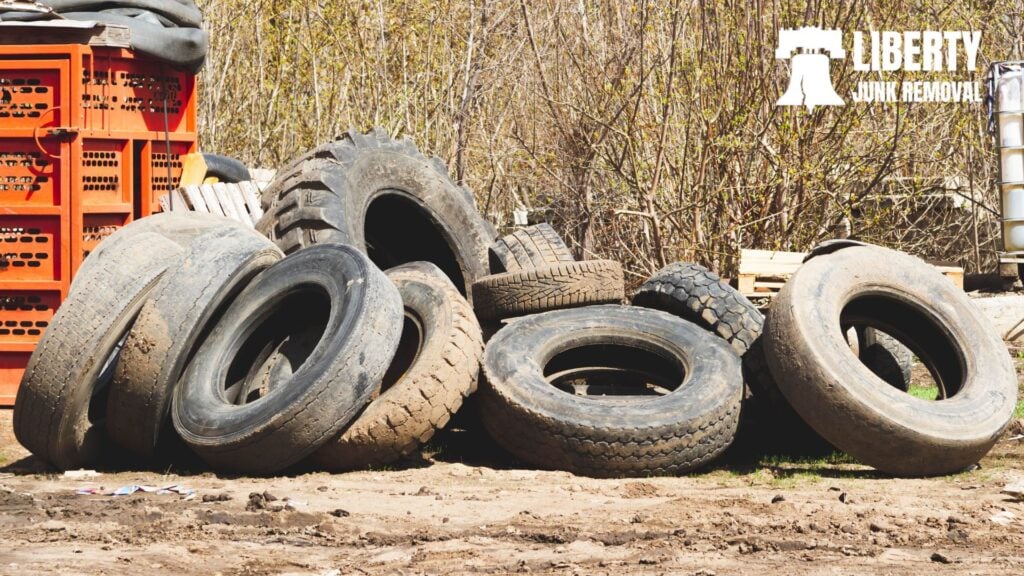
How To Dispose of Tires? It’s More Than Just Trash
If you’re stuck with old tires and you don’t have time, energy, or ideas to recycle or upcycle them, don’t worry. Contact us at Liberty Junk Removal. We handle tire disposal responsibly. Our pricing is fair, with no hidden surprises. You can check out our updated price list on our website.
Plus, we’re fully licensed and insured in Philadelphia. Trust us to do right by your tires and the planet. Let’s make tire disposal worry-free and eco-friendly together.

